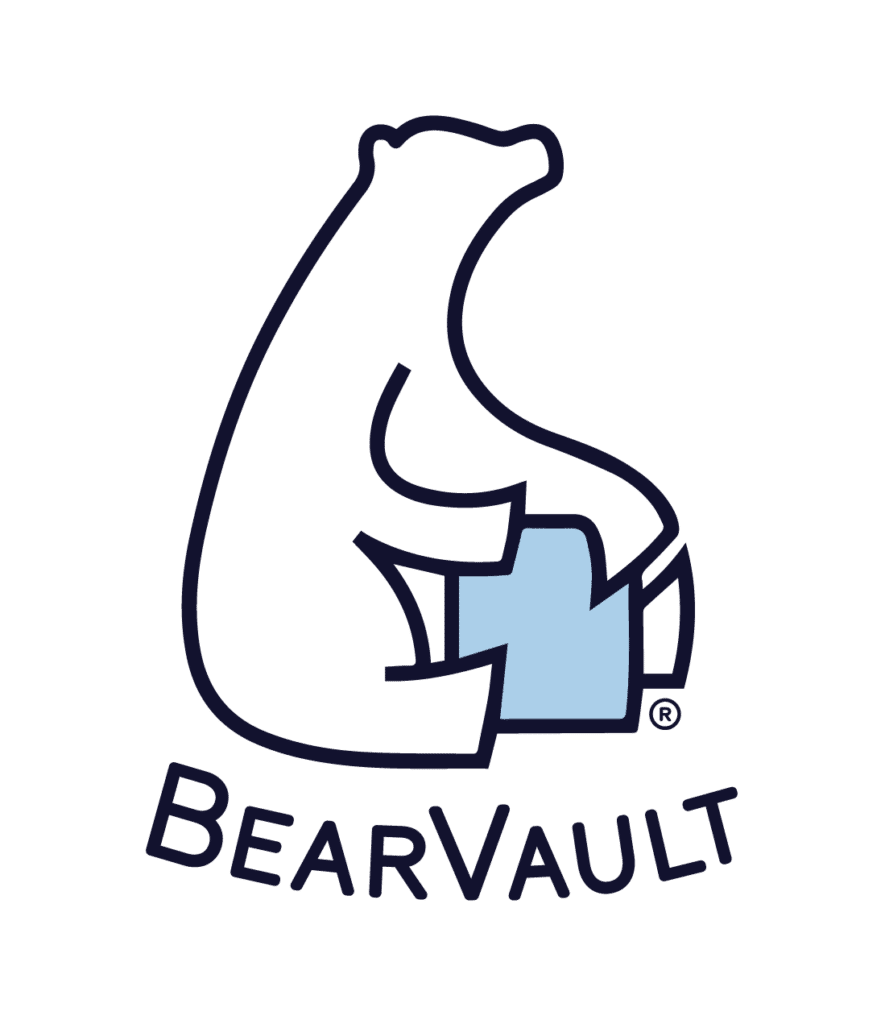The Endangered Grizzly Bear – Get to Know This Iconic Creature
Childhood me wouldn’t be sad to discover that grizzly bears are endangered. I blame an obscure movie from the 70s for my phobia of bears and particular distaste for grizzlies. That predatory bear was absolutely terrifying as a 7-yr-old!
So it’s ironic that I now spend so much time researching these amazing creatures and discovering that my chances of a dangerous encounter are astronomically low. Once I learned the facts it feels like my phobia is healed.
That rarity of a dangerous encounter has to do with their status as an endangered species. But there’s a huge asterisk here. The term “Endangered” needs clarification. So, let’s dig in.
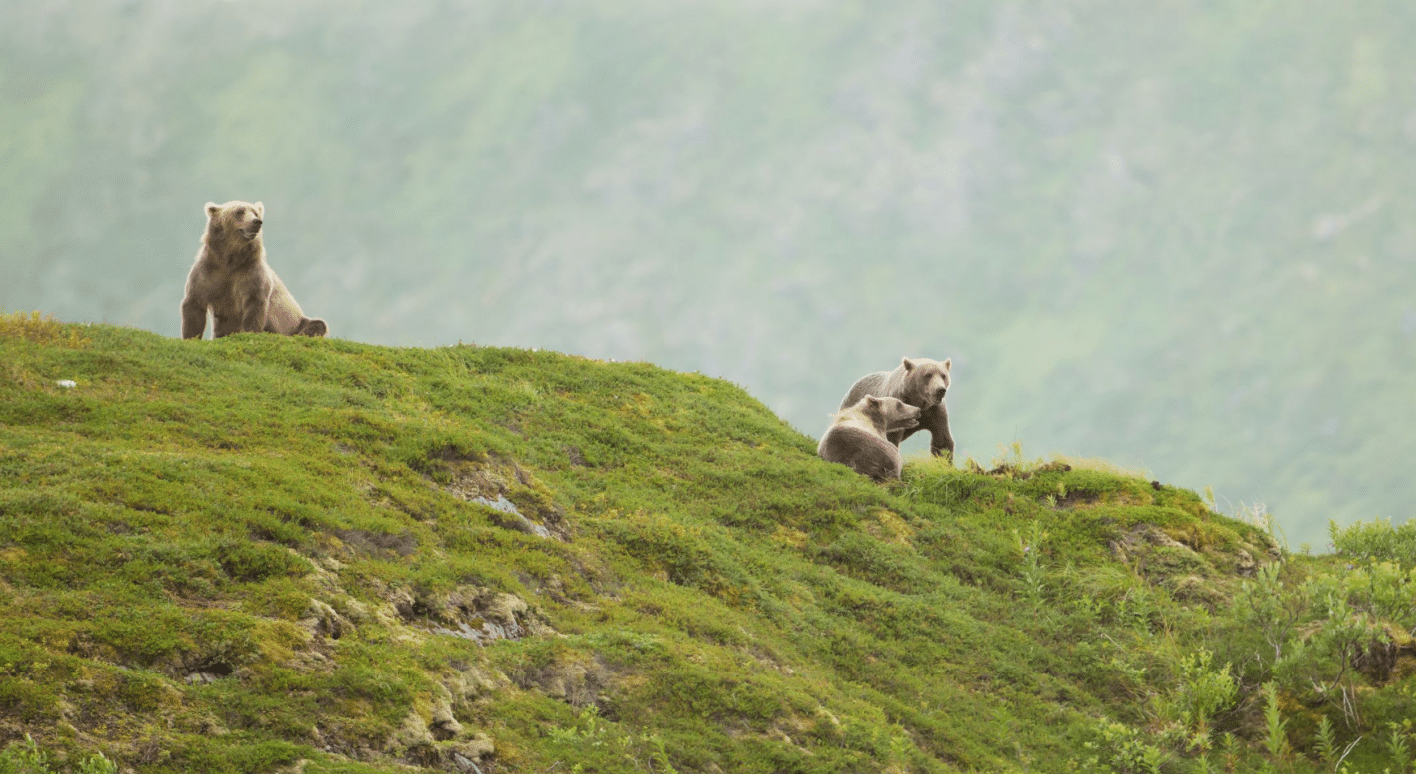
What Does Endangered Mean?
Using the word ‘endangered’ may seem simple, but it’s actually pretty convoluted. The International Union for Conservation of Nature keeps a list that’s broken up into seven categories. Two of those categories are “endangered” and “critically endangered”.
The other categories include “least concern,” “near threatened,” “vulnerable,” “extinct in the wild,” and “extinct.”
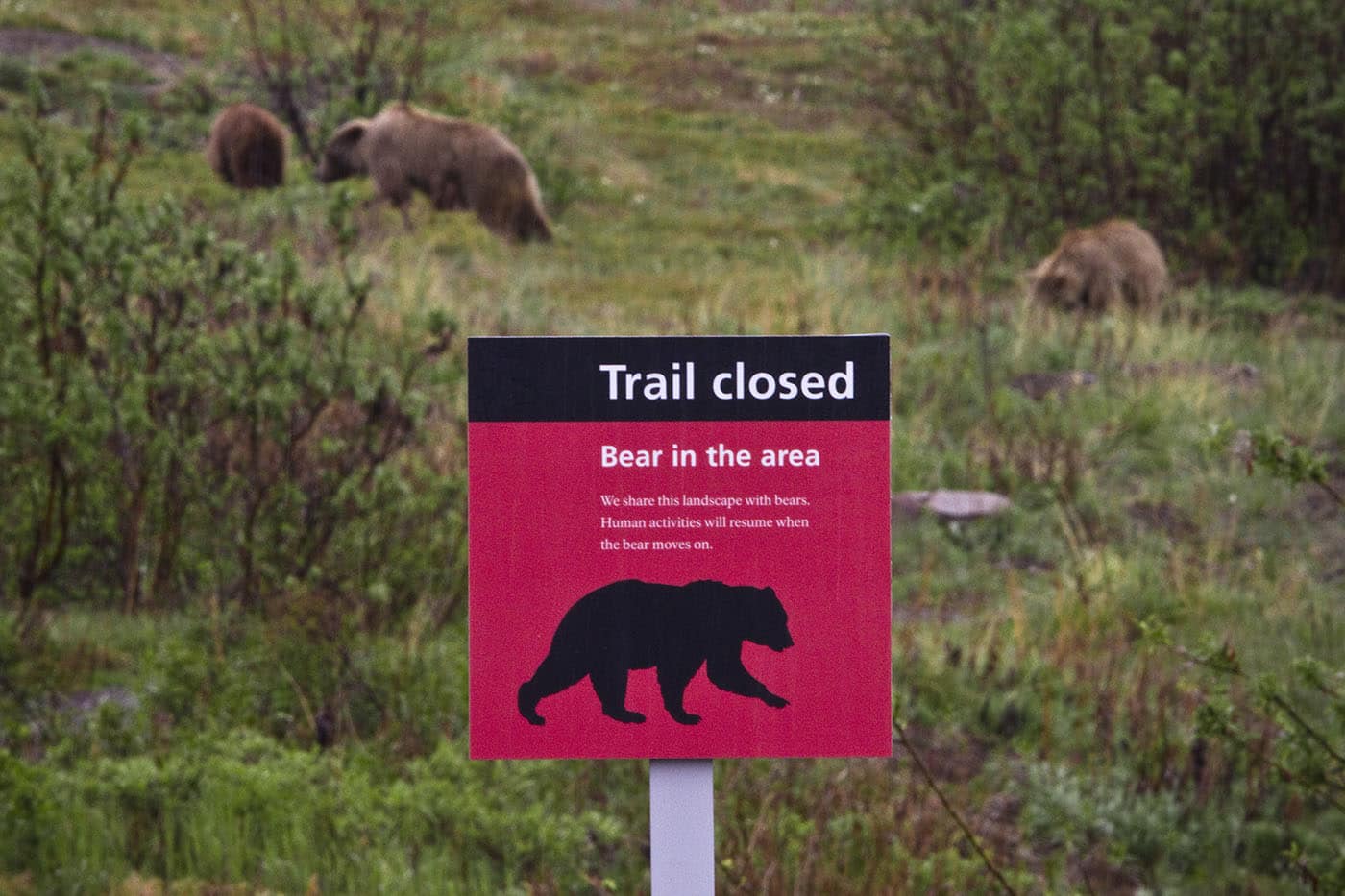
So Are Grizzly Bears Endangered?
On a global scale, grizzly bears aren’t considered endangered by the IUCN. But specific subgroups in specific locations are, and the United States put them on the Endangered Species list in 1975. Some groups have pushed to delist them in recent years, citing that repopulation goals have been met. Those efforts have, so far, been blocked by groups concerned that it’s too soon to assume stability.
The ratings by the IUCN in North American territories range from LC (least concern) in Alaska all the way to CR (critically endangered) in British Columbia. Yellowstone, a location under particular pressure to delist, is considered VU (vulnerable).
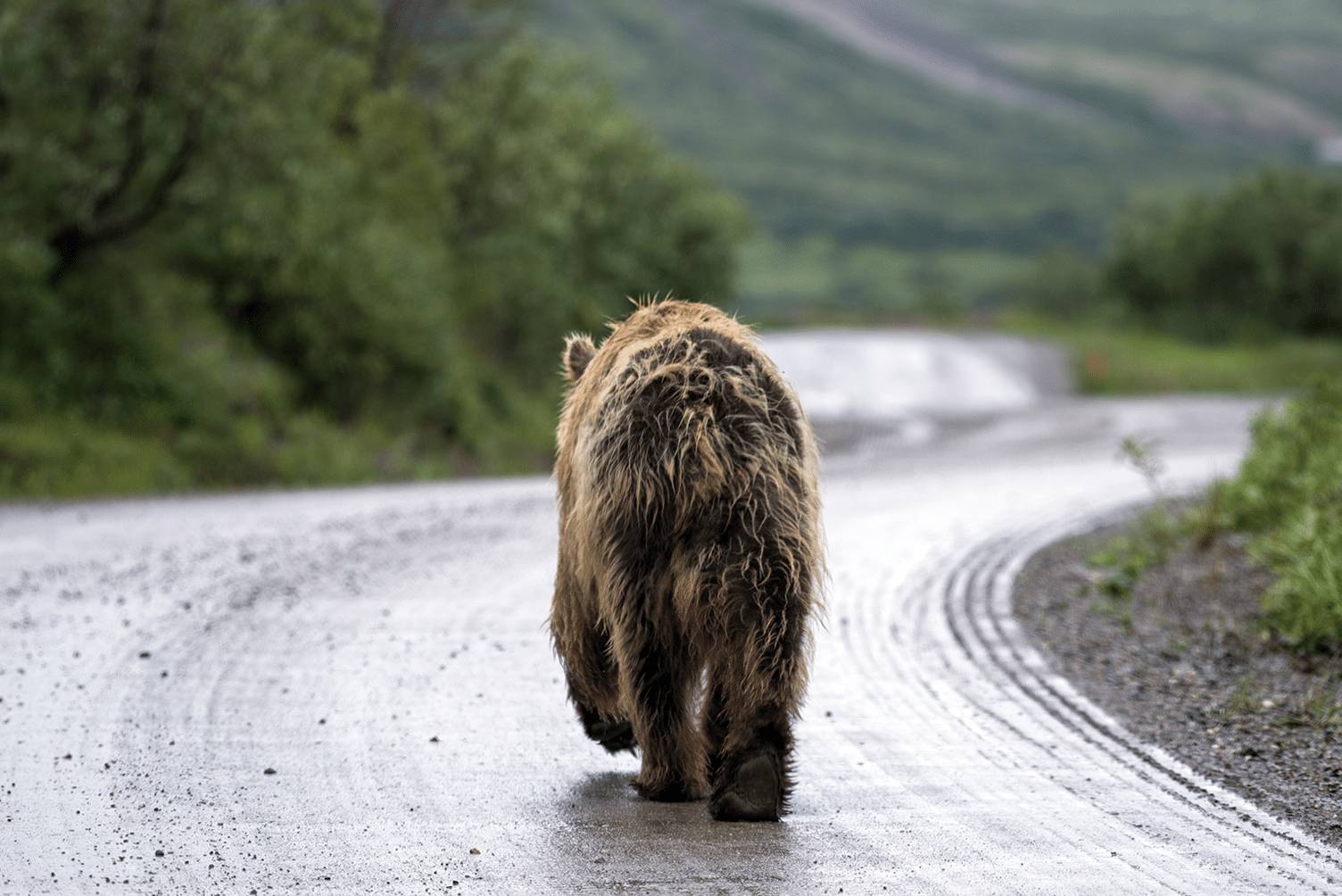
Where Can I See Grizzly Bears In The Wild?
Grizzly bears live in northern North America and mountainous regions of Europe and Asia. Wilderness areas supply their preferred diet of wild salmon, carrion (leftover carcasses from other predators or natural deaths), and plant matter.
The most concentrated population in North America can be found in various island groups in Alaska. The Kodiak Islands, for example, are home to an estimated 3,500 bears. Because of their distance from the mainland, this group of bears is considered 100% isolated, and the gene pool is complete. It’s only because there are thousands of mature adults in the region that the degree of isolation isn’t a problem. High isolation paired with low mature adult numbers equals endangerment.
It’s important to note that Kodiak brown bears (Ursus actos middendorffi) are a subspecies of what we generally call a “grizzly.” Ursus arctos horribilis is the species that lives in Yellowstone and other mainland locations. Studies determining the level of endangerment take both into account.
One surefire way to see a grizzly in the wild is to head to Katmai National Park. It’s bear heaven and heaven for bear lovers, too. You’ll have to win the lottery to stay at the lodge, but you can always rough it at the campground instead.

When Are Grizzly Bears Active?
As you might expect, you’re much less likely to run into a grizzly than a black bear. Their territory is smaller. Their numbers are, too. But they are every bit as active and need to consume just as many or more calories to prepare for those brutal northern winters.
Generally speaking, you can expect grizzly bears to be out and about from March to November. But, in reality, it’s a lot more complicated than that.
Hibernation habits depend largely on climate, localized weather patterns, and adequate food supply. A slim summer could mean bears are hesitant to head to their dens, prolonging their season of laser-focused foraging and increasing the likelihood of human conflicts. On the other hand, if a bear is fat and sassy earlier on, they could go into full-blown hibernation mode at the first snowflake.
It’s important to take all the local information into account to help set expectations. If you’re wanting to see a grizzly, you can make plans to increase your chances. And if you’re hoping desperately NOT to see one, you can adjust accordingly.
Whatever your hope is, always assume a grizzly encounter could include a bear that’s looking to up his caloric intake. Keep your food stored safely, and don’t let your stash become a reward for undesirable bear behavior.
Are Grizzly Bears Dangerous?
A grizzly has a bite force of approximately 1000 PSI. If it’s hard to wrap your mind around what that actually means, just try envisioning him crushing a bowling ball between his teeth. That’s the kind of jaw power you’re looking at!
Combine that with a swipe force of around 600 pounds and I’d say you can call grizzly bears “dangerous.” You’re probably not going to beat one in hand-to-hand combat, no matter what 6% of Americans think.
Strength and ability alone don’t automatically equate to ‘dangerous,” though.
Since 1784, there have only been 82 fatal conflicts with wild brown bears in North America. They’re not as highly concentrated and tend to live farther from humans. You’re automatically less likely to be injured by a grizzly than a black bear simply because of proximity issues.
But if you ever do find yourself face-to-face with one, here’s what to do.

What To Do If You Meet a Grizzly In the Wild
The first and most important thing to do is keep your cool. Panicking won’t serve you well and will likely lead to poor decision-making. You’re going to need to keep your wits about you to remember these generalized Do’s & Don’t’s.
Do
- Stay still or back away slowly
- Talk loudly with a low tone
- Always face the bear
- Keep your pack on
- Stay together if in a group
- Ready your spray
Don’t
- Run away
- Climb a tree
- Turn your back
- Drop your pack
- Scream
- Throw things
It almost goes without saying, but I’m going to say it anyway.
Every bear encounter is unique. Every scenario is unique. Every bear is unique. As such, you’ll have to use your wits to evaluate your situation and decide what will help.
Ask these questions to guide your decision-making process.
1. Do I have any attractants on me?
This question is particularly important if a bear has entered your camp. Their noses are insanely powerful, and they’re always looking for their next meal. If you’ve advertised an opportunity, any bear in the area is likely to check it out. Storing attractants in a bear proof canister and leaving it outside camp is the best way to prevent an attractant-driven visit.
2. What is this bear’s behavior telling me about his intentions and mindset?
Bear behavior during human conflicts can generally be designated as one of two types. Defensive behavior presents as curiosity, sniffing the air to gather information, raising up on hind legs to get a better vantage point, bluff charges, and, rarely, engaging with the perceived threat. Most bear encounters result in this type of behavior and end without bodily damage. Predatory behavior, on the other hand, is the alarming second possibility. It includes stalking humans as prey, indifference to attempts at dissuading behavior, and relentless pursuit, however slow.
If your bear looks defensive, what he needs to know is that you’re not a threat. Calmly letting him assess the situation will likely end with him choosing to remove himself from the equation. If he’s giving predatory vibes, that’s an entirely different story. He needs to know you’re not prey. Standing your ground like a predator who is his equal is the only proper response. In this kind of scenario, you’re allowed to throw things. Preferably, you’ll be able to incapacitate him with your bear spray, but if that fails or you find yourself without it, any defense will be better than none.
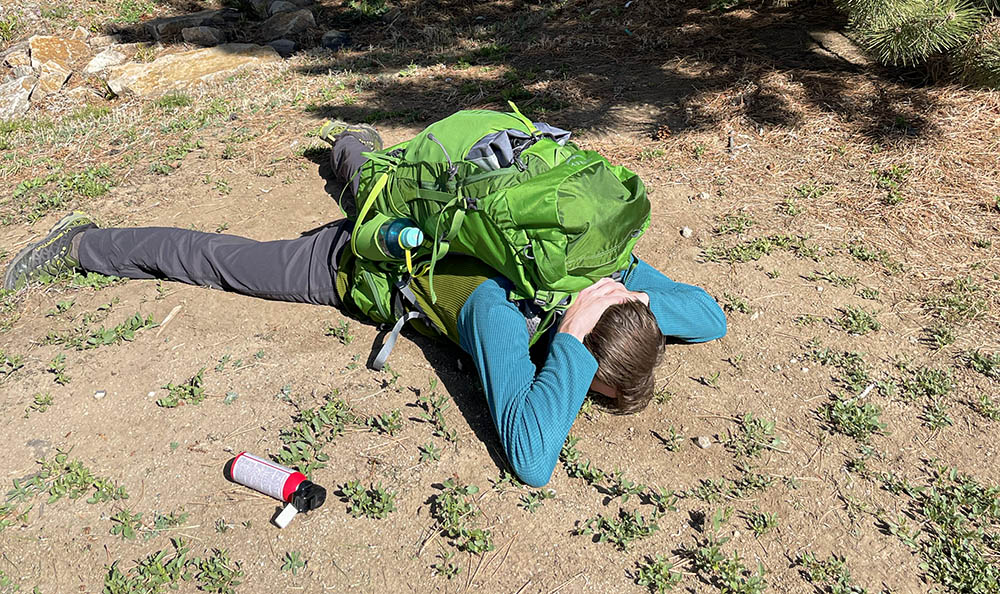
3. Has the bear made contact with me?
If you’ve been knocked down by a grizzly bear and he’s actively causing bodily harm, your goal is to try to maintain contact with the ground and stay face down. Clasp your hands behind your neck and spread your legs out to resist being rolled over. Laying face-down protects your stomach, and your pack protects your back, which is why you should keep it on.
This just scratches the surface. Before traveling in grizzly country, do some more reading on what to do if you encounter a bear.
Enjoy Your Grizzly Territory Adventure
Turns out, education and preparation can really take the edge off of fear. I’ve gotten to the point that I no longer jolt awake from dreams of a raging grizzly breaking a cabin window when I camp near Yellowstone (thanks for that trauma, Hollywood).
The fact is, mountains, crystal clear streams, and wild backcountry constantly call to me. Hiking in grizzly country is absolutely breathtaking in the best of ways. Hopefully, learning about the state of the grizzly population and how to handle an encounter has you feeling confident and able to enjoy a trip to the mighty grizzly’s backyard.
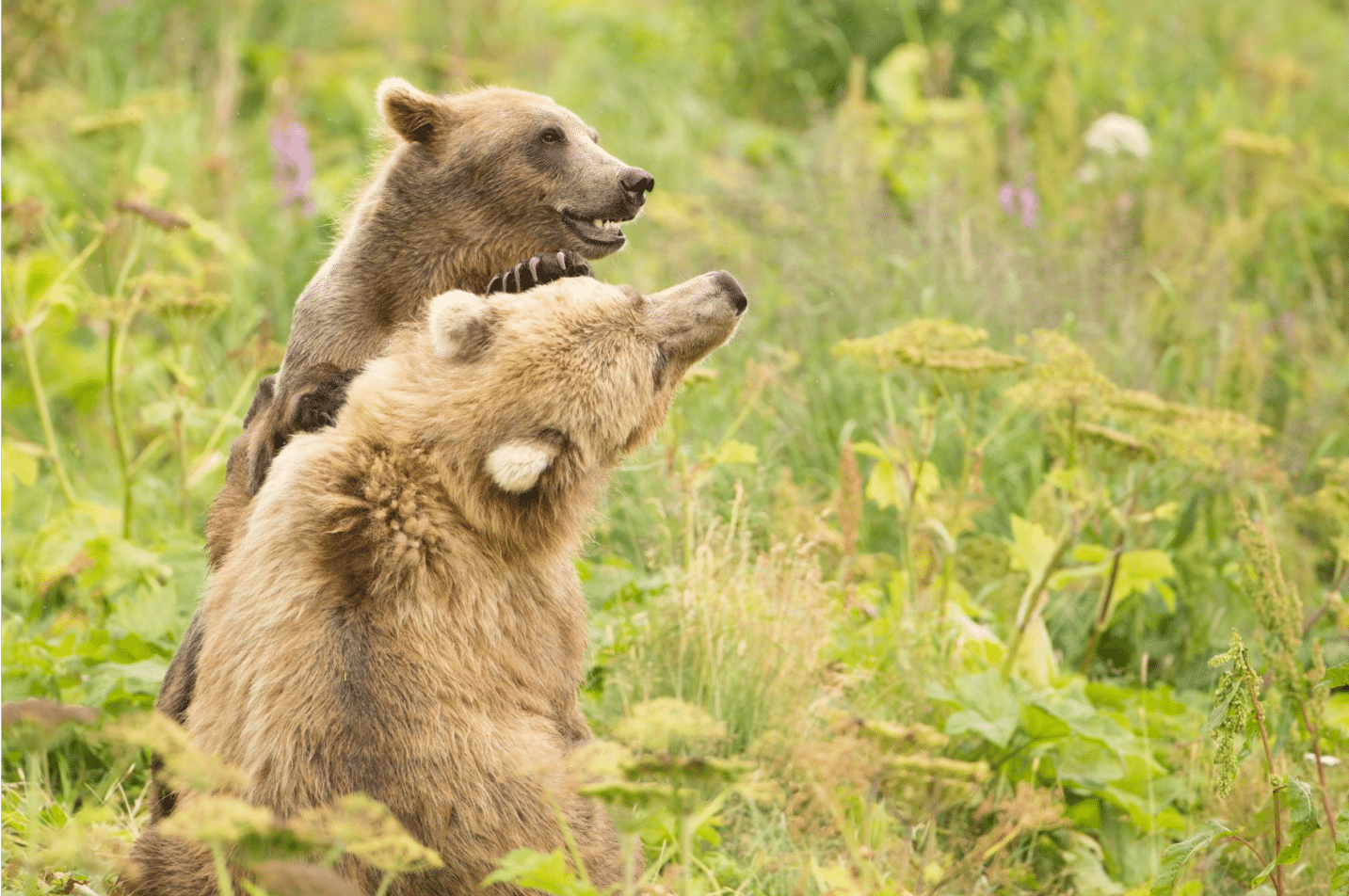
Author Profile

Jessica Cockroft
Jess merges her passion for words and an insatiable longing for adventure as an outdoor freelance content writer and marketer. When she’s not busy stringing words together you’ll probably find her planning another camping trip for her crew of kids or taking care of the homestead. You can find her on LinkedIn and Instagram, as well as on her own website.



